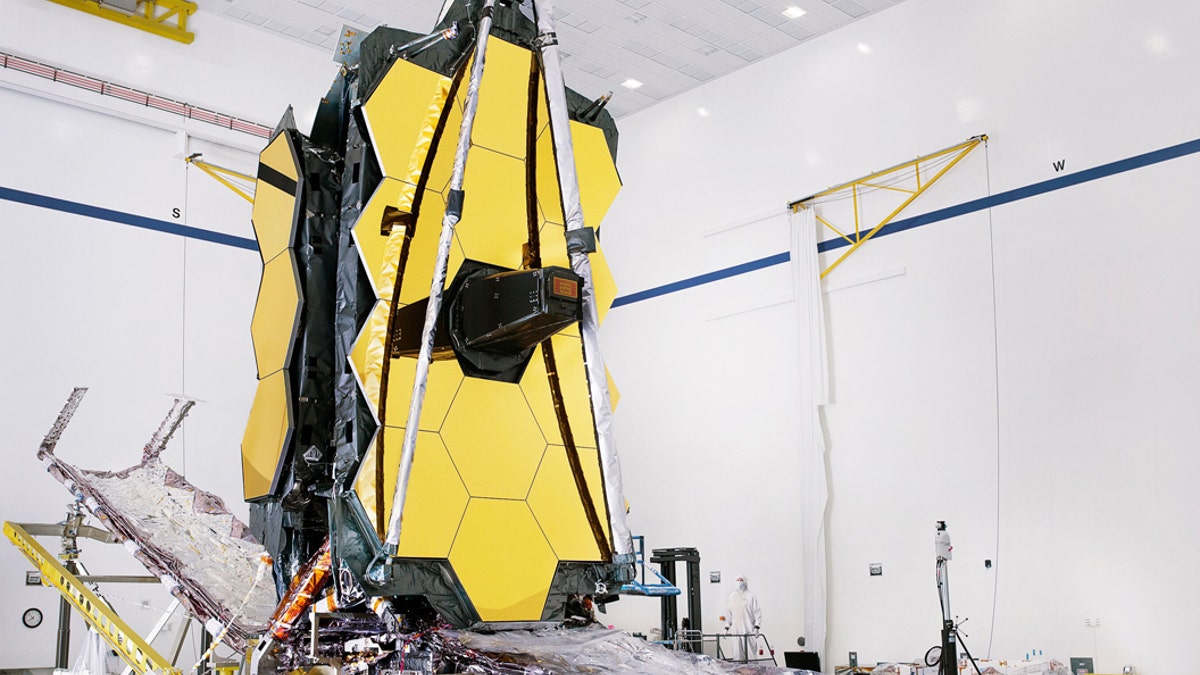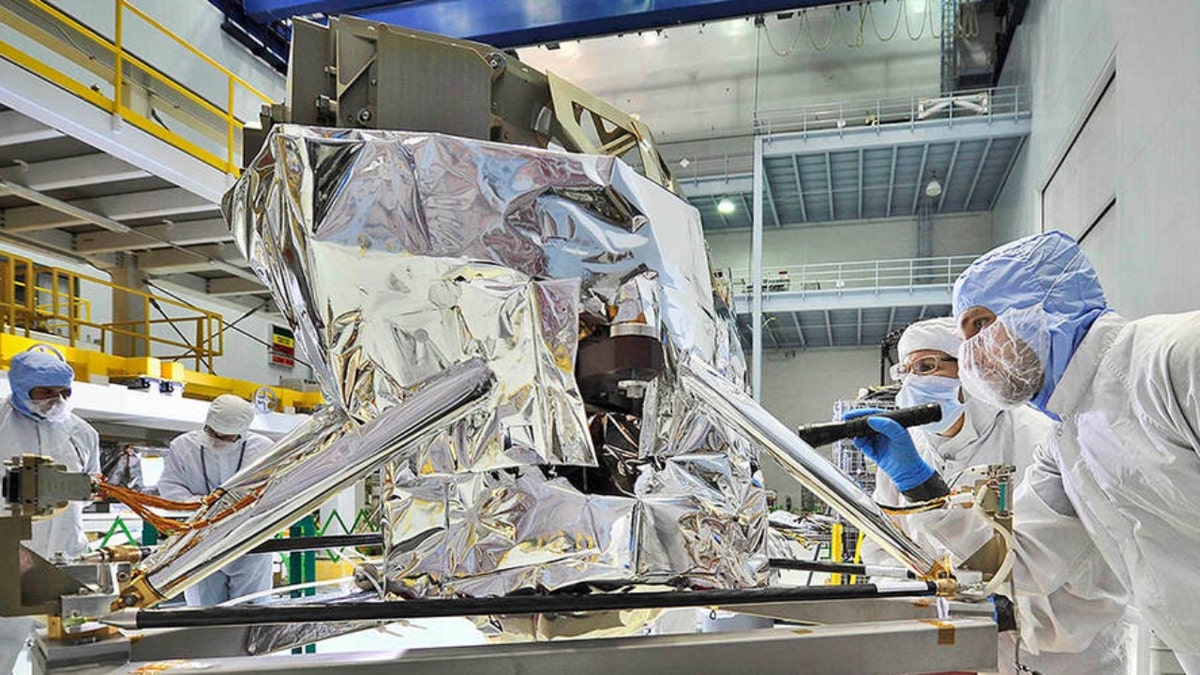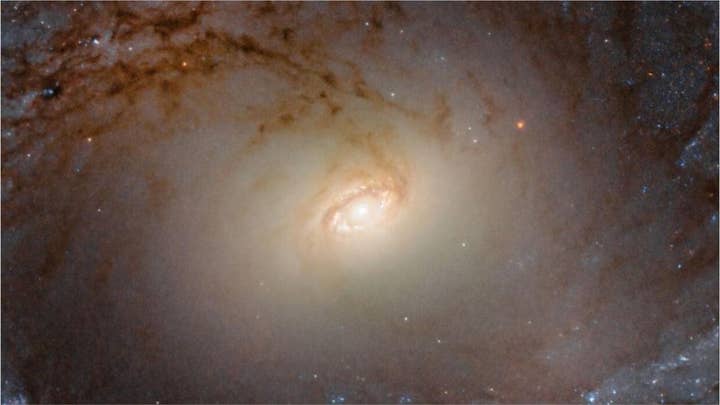James Webb Space Telescope: NASA's new eye on the universe
Power Player of the Week: John Durning, deputy project manager for the James Webb Space Telescope Project
The James Webb is set to become the most complex object ever launched into space, and the most powerful time machine ever built.
In a May interview with Fox News, NASA Administrator Bill Nelson said that the agency's James Webb Space Telescope will "peer back in time" 13.35 billion years. Telescopes like James Webb and its predecessor, the Hubble Space Telescope (HST) see light from distant stars and galaxies emitted eons ago. Thus, they see back into the past. Now, the world's premier space science observatory – considered a successor to the Hubble – is set to launch into orbit.
Following delays including one that pushed its launch from Christmas Eve, the $10 billion Webb – an international partnership with the European Space Agency and the Canadian Space Agency – is targeted to lift off on the morning of Dec. 25 on an Arianespace Ariane 5 rocket from Europe’s Spaceport in Kourou, French Guiana.
NASA CONFIRMS TELESCOPE LAUNCH FOR CHRISTMAS EVE
Already years late in flying, the telescope was recently jolted by a clamp during launch preparations and a bad communication link on the rocket had to be fixed.
For a mission duration of up to 10 years, the "JWST" will "complement and extend the discoveries of HST with longer wavelength coverage and greatly improved sensitivity." It will explore a time period known as the "Epoch of Reionization," which came after the dark ages following the Big Bang.
"The longer wavelengths enable Webb to look much closer to the beginning of time and to hunt for the unobserved formation of the first galaxies, as well as to look inside dust clouds where stars and planetary systems are forming today," the agency said.
Astronomers worldwide will use the Webb, and its science objectives require the Webb infrared observatory to be very large – so large that it can't fit into the nose cone of any available launch vehicle in its operational configuration.
Once in space, Webb's sunshield – which is the size of a tennis court – will expand and separate into its five distinct layers.

The fully assembled James Webb Space Telescope with its sunshield and unitized pallet structures (UPSs) that fold up around the telescope for launch, are seen partially deployed to an open configuration to enable telescope installation. (Credits: NASA/Chris Gunn)
"At over 21 feet (6.5 meters) in diameter and about 270 square feet (25 square meters) in area, Webb’s primary mirror is also too wide to fit into the Ariane 5 fairing in one piece, so it is segmented into 18 hexagonal pieces on a hinged structure so it can fold up for launch and unfold in space. It will be the largest mirror ever flown into space," NASA said in a document detailing the telescope and its launch.
How much detail a telescope can see is directly related to the size of the mirror area that collects light from the objects being observed. Webb's mirror has more than 6 times the light-gathering capability of the powerful Hubble.
The unfolding process will span two weeks, after which Webb has a million-mile journey to reach its destination, where it can orbit the sun in line with the Earth.
The special orbit allows one side of Webb's sunshield to always face the sun, Earth, and moon – blocking their heat and light from reaching the telescope's heat-sensitive optics.
The month-long trip takes the JWST to the second Lagrange (L2) point, a point that enables continuous communications with Webb through the Deep Space Network.
Webb's four instruments have two primary functions, including imaging and spectroscopy, or breaking down light into separate wavelengths. Those instruments include the Near-Infrared Camera (NIRCam), Near-Infrared Spectograph (NIRSpec), Near-Infrared Slitless Spectrograph/Fine Guidance Sensor (NIRISS/FGS), and Mid-Infrared Instrument (MIRI).

Engineers conduct a "receiving inspection" of the James Webb Space Telescope’s Mid-Infrared Instrument at NASA’s Goddard Space Flight Center after its journey from the United Kingdom. (Credits: NASA/Chris Gunn)
Several new technologies were developed during the building of the Webb telescope, including a "microshutter" device with thousands of tiny windows, a cryocooler that chills the mid-infrared detectors to the necessary temperature of only a handful of degrees above absolute zero
Webb will begin gathering its first set of scientific observations after its commissioning process finishes, around six months after launch.
"There’s so much riding on this," Nelson told The Associated Press, "opening up just all kinds of new understanding and revelations about the universe."
CLICK HERE TO GET THE FOX NEWS APP
Live coverage of the discovery machine's launch will be available on NASA TV, the NASA app, and the NASA website.
"The Webb mission will explore every phase of cosmic history – from within the solar system to the most distant observable galaxies in the early universe, and everything in between. Webb will reveal new and unexpected discoveries and help humanity understand the origins of the universe and our place in it," NASA said in a Saturday release.
The Associated Press contributed to this report.



